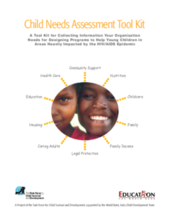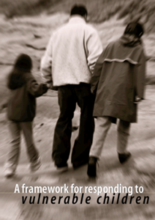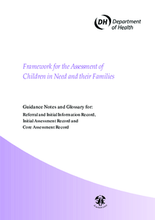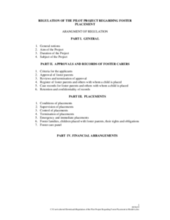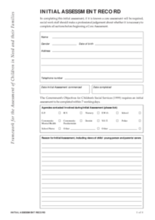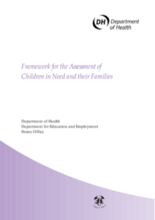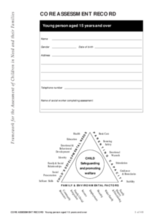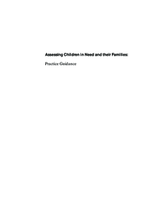Displaying 261 - 270 of 276
A comprehensive tool kit providing a methodology, questionnaire and software for assessing the needs of young children affected by the HIV/AIDS epidemic. Used to help design of service programs, secure funding, and monitor and evaluate programs specifically targeting the needs of young children and their families.
Overviews the causes and consequences of the orphan crisis in Africa and analyzes current social protection responses. Suggests good practices in social protection of orphans and vulnerable children.
Discusses the value of the UK Children in Need assessment framework for use by Victorian Family Services (Australia).
Guidance on how to complete the referral form, initial assessment and core assessment from the resource Framework for the Assessment of Children and their Families.
Form for recording basic information on the child and family, the services they currently access, and any required referrals for further assessment and/or services.
Regulations on foster care arrangements in Moldova, including the process of recruiting carers, the conditions of placements, and financial measures.
This form is used to decide whether a child is in need of protection or support services, the nature of services required, and whether a more detailed assessment should be carried out.
Comprehensive guidance on undertaking an assessment of children in need and their families. It covers the principles for assessment, the process of assessing children, how to analyze and make decisions, the roles and responsibilities of various agencies, and organizational arrangements to support effective assessments.
Age specific forms for collecting a large amount of information from a variety of sources in order to obtain a thorough understanding of the child’s needs, the parent’s capacities, and the impact of family and environmental factors.
A UK perspective on the theories and knowledge that should underpin an assessment of children in need and their families. It covers child development, parenting capacity, and family and environmental factors.

